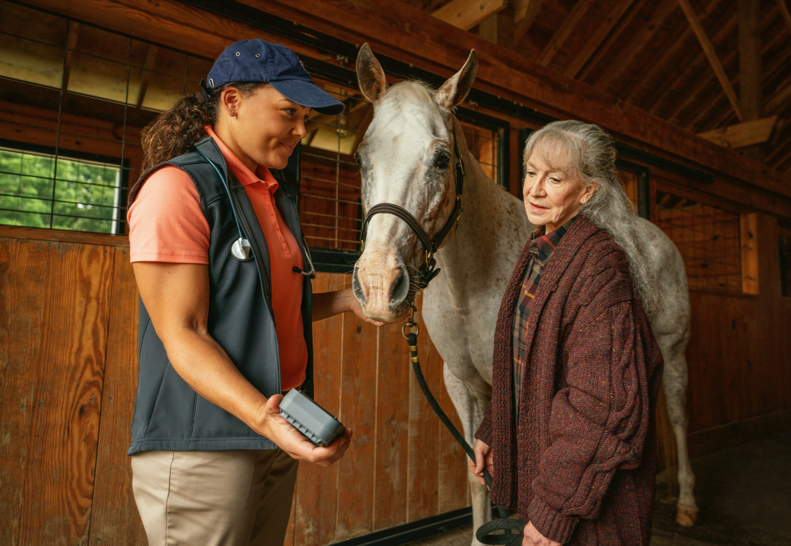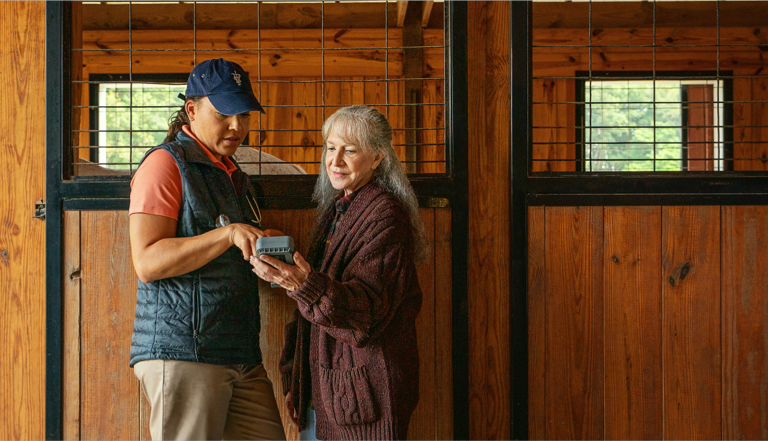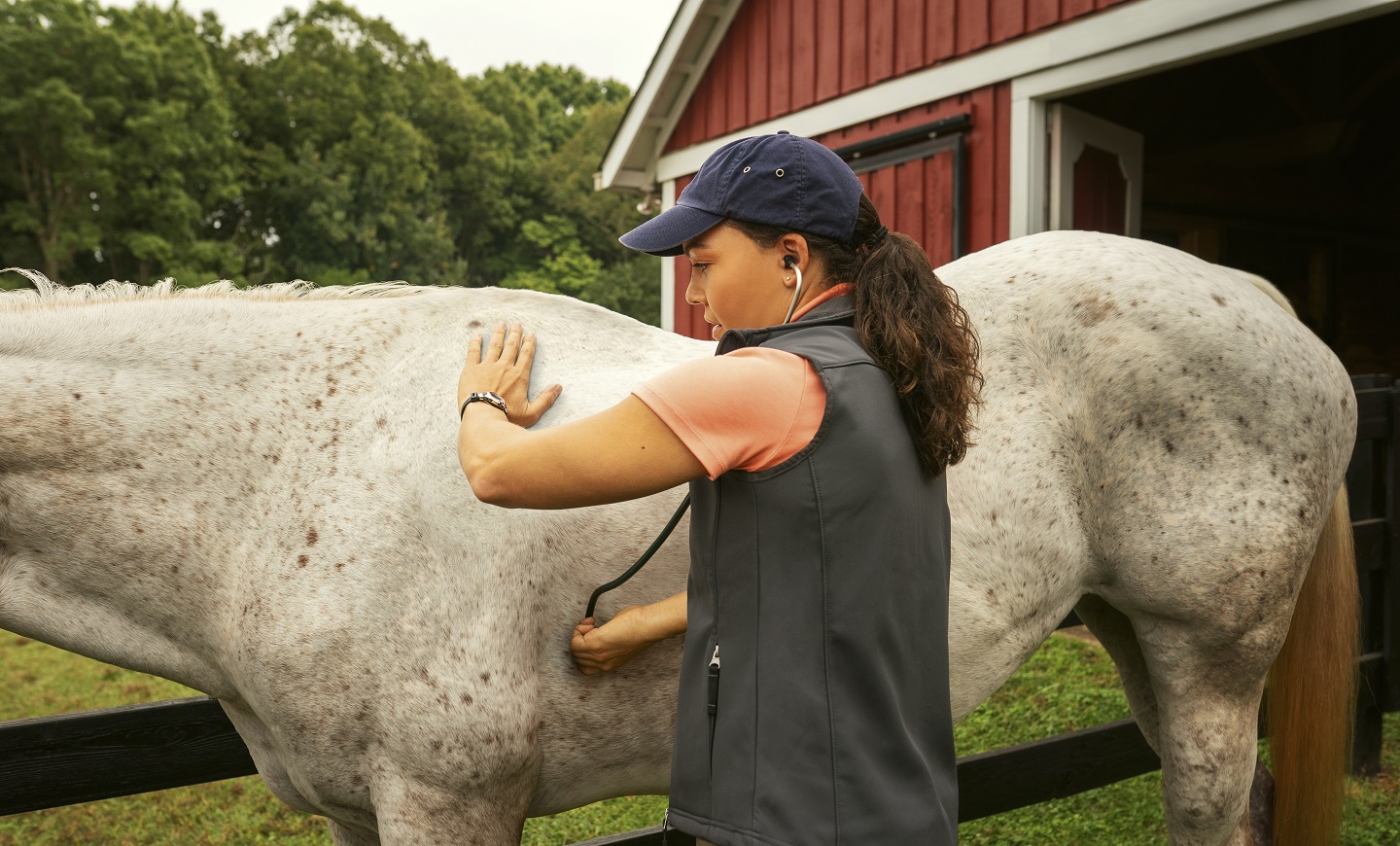
Stablelab advantage: A clearer look
When it comes to your horse’s health, you want quick and accurate information without the wait. Your veterinarian can use Stablelab to identify and measure Serum Amyloid A (SAA), a biomarker of infection, track response to treatment and screen to implement quarantine protocols during exposure.1–5
30x more sensitive than a thermometer at detecting subclinical infection1
10 minute stall-side results
Helps veterinarians make on-the-spot treatment decisions
When to use Stablelab
You know your horse best: Confirm your intuition and get added peace of mind. Here are some common situations where your veterinarian may run a Stablelab test.

Detecting infection

Monitoring response to treatment

Medical emergencies and pre/post surgical screen

Before, during and after travel

Pre/post performance evaluation

General wellness and pre-purchase exam
We would love to hear your Stablelab success story
Additional resources
Use our collection of resources to learn how Stablelab and other Zoetis Equine products can help your horse receive the best care possible.
References
- Oertly M, Gerber V, Anhold H, et al. The accuracy of serum amyloid A in determining early inflammation in horses following long-distance transportation by air. AAEP Proceedings. 2017:460-461.
- Belgrave, R. et al. Assessment of Serum Amyloid A testing of horses and its clinical application in a specialized equine practice. JAVMA, Vol 243 no 1, July 1, 2013. Pages 113-119.
- Viner, M et al. Comparison of Serum Amyloid A in horses with Infectious and noninfectious respiratory diseases. Journal of Equine Veterinary Science. 2017 (49) 11-13.
- Jacobsen, Stine. Review of equine Acute-Phase proteins. AAEP Proceedings Vol 53 2007, 230-235.5 Nolen-Walston, R. How to interpret Serum Amyloid A concentrations. AAEP Proceedings 2015, 130-137.
- Nolen-Walston, R. How to interpret Serum Amyloid A concentrations. AAEP Proceedings 2015, 130-137.
 Visit veterinary professionals site
Visit veterinary professionals site





